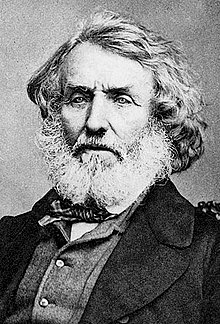Mount Everest and Application of Theodolite on It
20/10/2019
Gargi Banerjee*
Mount
Everest (known in Nepali as Sagarmatha and in Tibetian Chomolungma;
‘Mother Goddess of the Land’), the World’s highest mountain above mean sea
level, located in the Mahalangur Himal sub-range of the Himalayas. The
international border between Nepal and China run across its summit point.
 |
| Sir George Everest |
 |
| Radhanath Sikdar |
Radhanath Sikdar
was an Indian Bengali mathematician who is best known for calculating the height
of the Mount Everest. He was born on October, 1813. When in 1831, Surveyor
General of India Sir George Everest
(with whose name the mountain has been named) was searching for a brilliant
young mathematician with particular proficiency in spherical trigonometry Hindu
College’s maths teacher Tytler recommended
his pupil, 19 years old Radhanath. He joined the Geological Trigonometric Survey in 1831. He excelled in geodetic
surveying. George Everest was impressed by his performance. He was the first to
identify Mount Everest as the world’s highest peak using trigonometric
calculations and the instrument Theodolite.
We use this instrument to measure angles both horizontally and vertically. It
helps to find out the height of any object. From one point at some distance
from the foot of the hill he would have measured the angle of elevation, then
moving away from it to a particular distance, again measured the angle of
elevation of the top of the hill. In each case there were two right angled triangles
and by solving he would have got the height of the mountain.
The
current official elevation 8,848 metre
recognized by China and Nepal in 1955. In 2005, China remeasured the rock
height of the mountain with the result 8,844.43
metre. So, there was an argument between Nepal and China whether the
official height would be the snow height
(8,848 m, Nepal) or rock height (8,844.43m,
China). In 2010, an agreement was reached by both sides that the height of
Everest would be 8,848 m.
At
11:30 am on May 29, 1953 Sir Edmund
Hillary a mountaineer of New Zealand and Tenzing Norgay, a Sherpa of Nepal became the first explorers to
reach the summit. They were part of the ninth
British expedition to Everest led by John Hunt. Many others from different
parts of the world climbed the summit. Bachendri
Pal from India was the first lady to reach the summit while Junko Tabai from Japan was the first
woman from the world to reach on the summit.
 |
| Wastes |
 |
| Abundoned Tents |
According
to official statistics, there have been over 4,000 mountaineers who successfully scaled the summit of Mount
Everest since Sir Edmund Hillary and Tenzing Norgay. Porters who work on the
mountain carries down approx 14 tons
of human wastes from base camp and other locations.The hazardous materials are oxygen cylinders, food wrappers, broken tents,
batteries, plastic bottles. Nepal officials are warning human wastes being
left by climbers causing pollution could spread disease on the world’s highest peak.More
than 200 bodies dot the mountain.
About 5 years ago, Nepal Instituted a system in which it takes 4,000 dollars deposit from climbing teams
and only refunded if they bring 18 pounds of wastes back. We have learnt that
some days ago from the climbing path of the Mount Everest, 3000kg of wastes
have been collected.2000kg wastes have been collected and transferred to
Okaldunga and 1000kg wastes were transferred to Kathmandu. To save Everest from
pollution and wastes, Nepal government started a campaign named “Swacch
Mount Everest Abhiyan”. The government gets every year dead bodies in
their Cleaning campaign. Nepal Government spent 230 lakh in nepal currency.
Nepal
had issued 381 permits for Everest expedition the last season of which many are
not trained. 10 summiteers have died in two weeks because of bad weather, long
ques to the summit, exhaustion and running out of oxygen. The Government should
take very strict and positive measures to prevent Mt.Everest from pollution and
death casualty.
*Student,
Honours, Third Semestar










Comments
Post a Comment